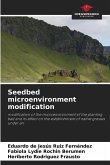Banj-oak (Quercus leucotrichophora A. Camus) forests are distributed in Northern India, Nepal, Myanmar, Pakistan, and Sri Lanka. These are the most common broadleaf forests in the mid-elevation central Himalaya in India and being utilized for various purposes e.g. fuel wood, fodder, minor timber. These forests are also known for water and soil conservation and preferred habitat for many wildlife species. The pressure on these forests has increased due course of time as these forests are the principal source of plant biomass at the mid-elevation central Himalaya where most of the hill population reside. In this book, we have presented the data of a comprehensive study carried out in Uttarakhand Himalaya-India. We have analyzed various Banj-oak forests for their community composition and structure along disturbance gradient at various aspects and altitudes; we tried to find out the response of disturbance on composition, diversity and phytosociological attributes of species.








